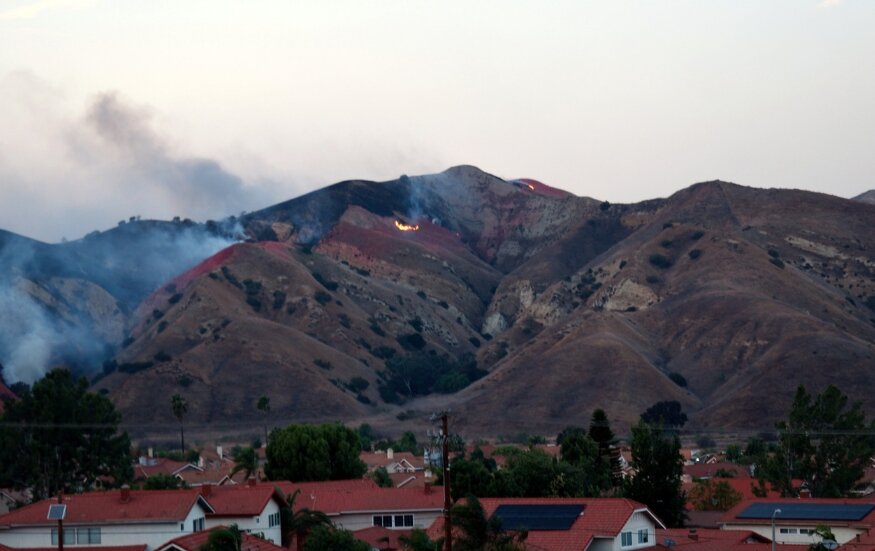Jan. 2021 Science Corner | “The delayed effect of wildfire season particulate matter on subsequent influenza season in a mountain west region of the USA”


As she started her research, Dr. Landguth had an idea – could wildfire season be exacerbating the flu season, even though it is months after the flames have been extinguished?
“The delayed effect of wildfire season particulate matter on subsequent influenza season in a mountain west region of the USA”
Authors: Erin L. Landguth, Zachary A. Holden, Jonathan Graham, Benjamin Stark, Elham Bayat Mokhtari, Emily Kaleczyc, Stacey Anderson, Shawn Urbanski, Matt Jolly, Erin O. Semmens, Dyer A. Warren, Alan Swanson, Emily Stone, Curtis Noonan
Interview and story by: Kim Quesnel
It all started when Dr. Erin Landguth, professor of computational ecology & population health at the University of Montana, set out to understand the underlying factors that influence public health outcomes. Having spent years developing relationships with state agencies to gather data, she started investigating the spatial and temporal factors that lead to respiratory disease and, in particular, seasonal influenza.
As she started her research, Dr. Landguth had an idea – could wildfire season be exacerbating the flu season, even though it is months after the flames have been extinguished? In previous studies, researchers had found short-term impacts of fine particulate matter (PM 2.5) from wildfire smoke, but no one had investigated the longer-term impacts. She and her team wondered if the effects could be seen weeks or even months later.
“At first I thought, there is no way that there could be that long of a delay of wildfire smoke and adverse health impacts during flu season,” Dr. Landguth said. Though the window between wildfire and flu season is rapidly decreasing as the climate warms, the long lag between the two meant that researchers had never attempted to make the connection.
However, through statistical analysis, Dr. Landguth and her colleagues were able to find distinct, robust relationships between higher particulate matter concentrations and increased influenza cases in the following winter flu season across their study area, the state of Montana. Dr. Landguth explained that while the model outputs are complex, the message is clear, “Flu cases increase after a bad wildfire season.”
Their study is only the beginning of what the researchers see as an important area for public health research. Expanding this work beyond Montana is critical but poses new challenges in data collection, incorporating chemical transport models, and different climatic conditions where fire season and flu season are not mutually exclusive.
As research at the intersection of public health and wildfire smoke becomes more prevalent, Dr. Landguth emphasized the need for more data. For example, more research is needed to understand the environmental justice implications of wildfire smoke, but to do that requires spatially explicit, fine resolution data which is currently unavailable.
“Of particular concern in western rural states is the scarcity of air quality monitoring stations which provide the data needed to deliver accurate respiratory health warnings and predictions to the public, as well as to provide the data to better understand the role air pollution has on respiratory diseases.” Dr. Landguth said.
In much of the west, the sparsity of air quality monitoring stations in rural regions is exacerbated by a combination of complex terrain and mountain meteorology which can result in significant differences in air pollution levels across communities.
Dr. Landguth says that their findings also bring up issues around wildfires, forest management, and smoke. One question that she has is about prescribed burning. “We know that prescribed burning is very important for forest health, but we want to better understand burn windows that minimize public health impacts.”